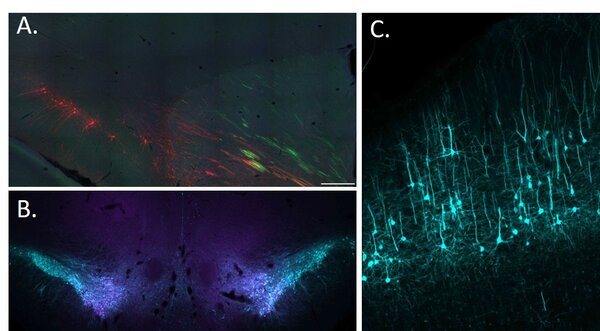Connectivity and Networks

We explore the anatomical and functional networks, their afferent and efferent connections, of pathways projecting via the medial forebrain bundle in rodent models of depression, and in post-mortem human brains. Depression is widely accepted as a network disease with the symptoms emerging as a consequence of disorderly network connectivity, and not on account of a dysfunction of a single brain region. Better understanding of the anatomical (i.e. hard wiring) and functional (i.e. physiological) connectivity of the neurocircuitries associated with depression is important to learn about the disease etiology, and how the symptoms/ phenotypes emerge. It is also essential to understand which proximal and distal regions and projections might be modulated when a given target is stimulated with DBS, or via other modalities such as optogenetics or focused ultrasound. The method of choice to study connectomics will depend on several parameters (e.g. the experimental design, or the source and state of the tissue), and we employ methods ranging from classical immunohistochemistry/ immunofluorescence, to brain-wide virus based monosynaptic input-output quantitative analysis, and fiber tractography following data collected using MRI-based diffusion tensor imaging.
